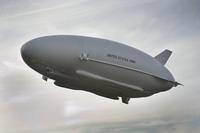-
New system uses low-power Wi-Fi signal to track moving humans -- even behind walls
The comic-book hero Superman uses his X-ray vision to spot bad guys lurking behind walls and other objects. Now we could all have X-ray vision, thanks to a new system developed by researchers at MIT. The system, called “Wi-Vi,” is based on a concept similar to radar and sonar imaging. But in contrast to radar and sonar, it transmits a low-power Wi-Fi signal and uses its reflections to track moving humans. It can do so even if the humans are in closed rooms or hiding behind a wall.
-
-
Better earthquake early-warning system
Geophysicists have developed a new way of calculating the magnitude of an imminent earthquake by making better use of measurements of the compression waves produced early in the event. They say that the technique could be used to create a better early-warning system for earthquakes that could be used worldwide.
-
-
Modeling earthquakes and explosives reactions
Researchers are developing mathematical models that can help in reducing rock fracturing and soil liquefaction caused by natural or man-made disasters. The outcomes of the research could improve safety levels in the mining and petroleum industries, and play a critical role in the ability of civil infrastructure to withstand disasters such as earthquakes and explosions.
-
-
Pyreos, ultra‐low power consumption IR sensor specialist, secures $4 million investment
Edinburgh, Scotland-based Pyreos Limited, a specialist in ultra‐low power consumption infrared sensor technology, the other day announced plans for international expansion after securing a further funding round of $4 million. It is possible to use Pyreos sensor arrays in many applications, among them border security, where they can identify human movement at distances of several kilometers.
-
-
Squeezing light improves performance of MEMS sensors
Microelectromechanical systems, known as MEMS, are ubiquitous in modern military systems such as gyroscopes for navigation, tiny microphones for lightweight radios, and medical biosensors for assessing the wounded. Such applications benefit from the portability, low power, and low cost of MEMS devices. The use of MEMS sensors is now commonplace, but they still operate many orders of magnitude below their theoretical performance limits, due to two obstacles: thermal fluctuations and random quantum fluctuations, a barrier known as the standard quantum limit.
-
-
Smartphone technology to accelerate development of unattended sensors
DARPA wants to develop low-cost, rapidly updatable intelligence, surveillance, and reconnaissance (ISR) sensors – to be used by the military on the ground, in the air, at sea, and undersea – in less than a year, a marked improvement to the current three-to-eight year development process. It hopes to do so by using an original design manufacturer (ODM) process similar to that of the commercial smartphone industry.
-
-
Large robotic jellyfish to patrol the oceans

The Office of Naval Research wants to place self-powering, autonomous machines in waters for the purposes of surveillance and monitoring the environment, in addition to other uses such as studying aquatic life, mapping ocean floors, and monitoring ocean currents. Researchers have built a device for that purpose — a life-like, autonomous robotic jellyfish the size and weight of a grown man, 5 foot 7 inches in length and weighing 170 pounds.
-
-
License plate scanners in Canada under fire from privacy commissioners
British Columbia’s privacy commissioner is not happy about the way police departments are using their license-plate scanners; in a report released last week, Commissioner Elizabeth Denham said changes must be made to the Victoria police department’s Automated License Plate Recognition Program (ALPR), after it was discovered that the program could be used as a surveillance tool
-
-
DARPA seeking surveillance technology to predict future behavior
DARPA has teamed up with scientists from Carnegie Mellon University to create an artificial intelligence system that can watch and predict what a person will “likely” do in the future, using specially programmed software designed to analyze various real-time video surveillance feeds; the system can automatically identify and notify officials if it recognized that an action is not permitted, detecting what is described as anomalous behaviors
-
-
New fluorescence technology pinpoints oil leaks at sea
Cambridge Consultants uses fertility monitor technology in oil leak early warning system; the company has built an oil spill detection technology platform which is capable of detecting the natural fluorescence of even tiny amounts of oil in or on water
-
-
Radiation-enabled computer chips allow low-cost security imaging systems
With homeland security on high alert, screening systems to search for concealed weapons are crucial pieces of equipment; these systems, however, are often prohibitively expensive, putting them out of reach for public spaces such as train and bus stations, stadiums, or malls, where they could be beneficial; until now
-
-
DHS submersible Pluto mimics the real narco-subs
In the early 1990s, South American drug cartels came up with a new tactic to transport narcotics destined for the United States: small, radar-dodging, self-propelled, semi-submersibles (SPSSs); better to address the submersible problem, DHS Science and Technology Directorate created its own submersible and called it Pluto, after the planet which is difficult to spot
-
-
Remote monitoring market exceeds $29 billion in 2011
A new reports says that the world market for remote monitoring services was worth more than $29 billion in 2011, equivalent to $2.4 billion in recurring monthly revenues (RMR) across the year; the report also estimated that, in the same year, 54 million accounts, or customer locations, were provided with services
-
-
DHS seeks better ways to detect ultra light aircrafts used by smugglers

As the war on drugs continues with every sunrise and sunset, DHS has awarded a contract just short of $100 million for a specialized system which will be able to detect ultralight aircrafts which are used to smuggle drugs across the border
-
-
World’s largest blimp passes flight test

The world’s largest, lighter-than-air, optionally piloted aircraft — the U.S. Army’s Long Endurance Multi-Intelligence Vehicle (LEMV) – completed its first test flight in Lakehurst, New Jersey, the birthplace of the U.S. storied military airship past; the LEMV will provide improved ISR capabilities to the U.S. Army in the form of an “unblinking stare” over ground troops, ranging anywhere from one day to multiple weeks
-
- All
- Regional
- Water
- Biometrics
- Borders/Immig
- Business
- Cybersecurity
- Detection
- Disasters
- Government
- Infrastructure
- International
- Public health
- Public Safety
- Communication interoperabillity
- Emergency services
- Emergency medical services
- Fire
- First response
- IEDs
- Law Enforcement
- Law Enforcement Technology
- Military technology
- Nonlethal weapons
- Nuclear weapons
- Personal protection equipment
- Police
- Notification /alert systems
- Situational awareness
- Weapons systems
- Sci-Tech
- Sector Reports
- Surveillance
- Transportation
Advertising & Marketing: advertise@newswirepubs.com
Editorial: editor@newswirepubs.com
General: info@newswirepubs.com
2010-2011 © News Wire Publications, LLC News Wire Publications, LLC
220 Old Country Road | Suite 200 | Mineola | New York | 11501
Permissions and Policies
Editorial: editor@newswirepubs.com
General: info@newswirepubs.com
2010-2011 © News Wire Publications, LLC News Wire Publications, LLC
220 Old Country Road | Suite 200 | Mineola | New York | 11501
Permissions and Policies
